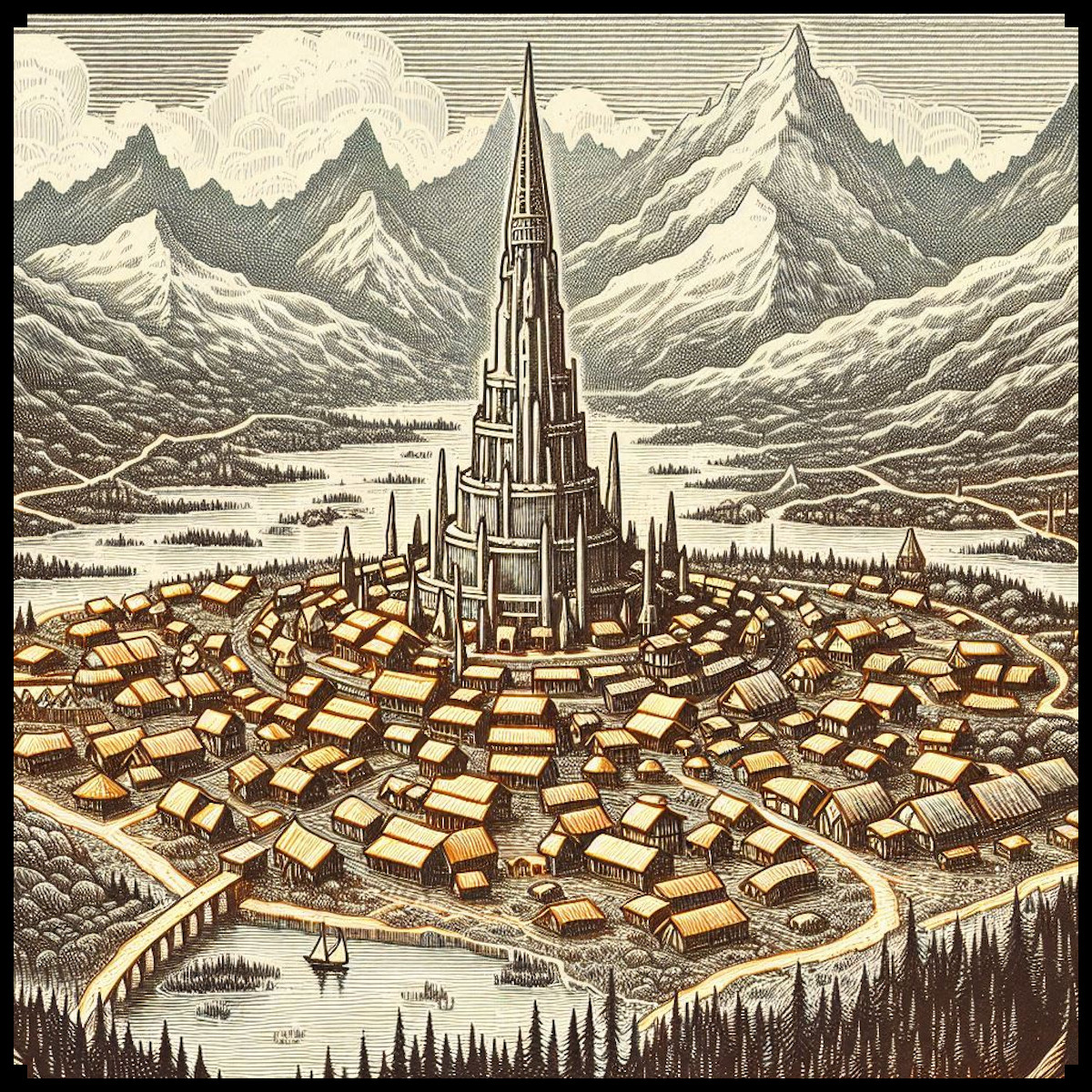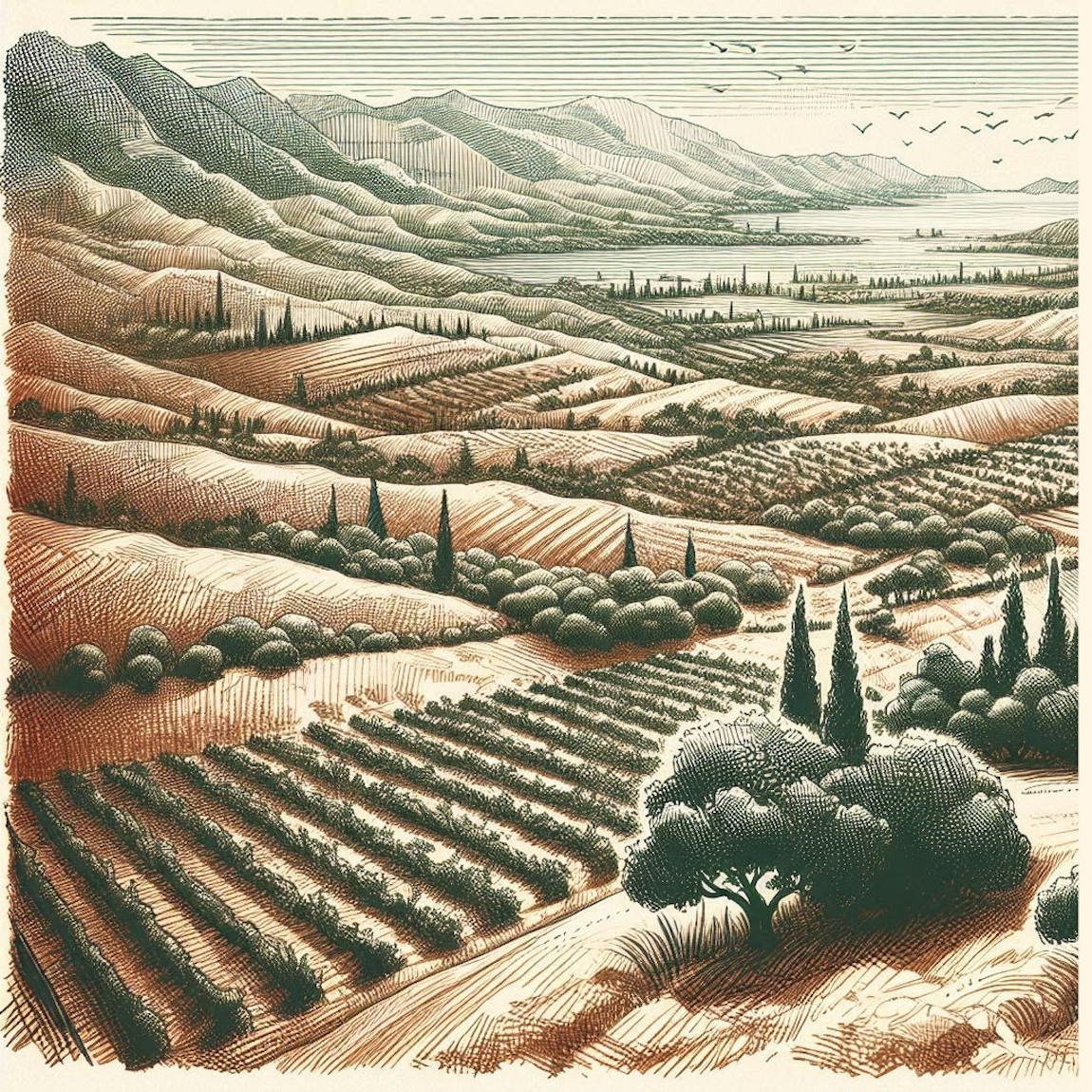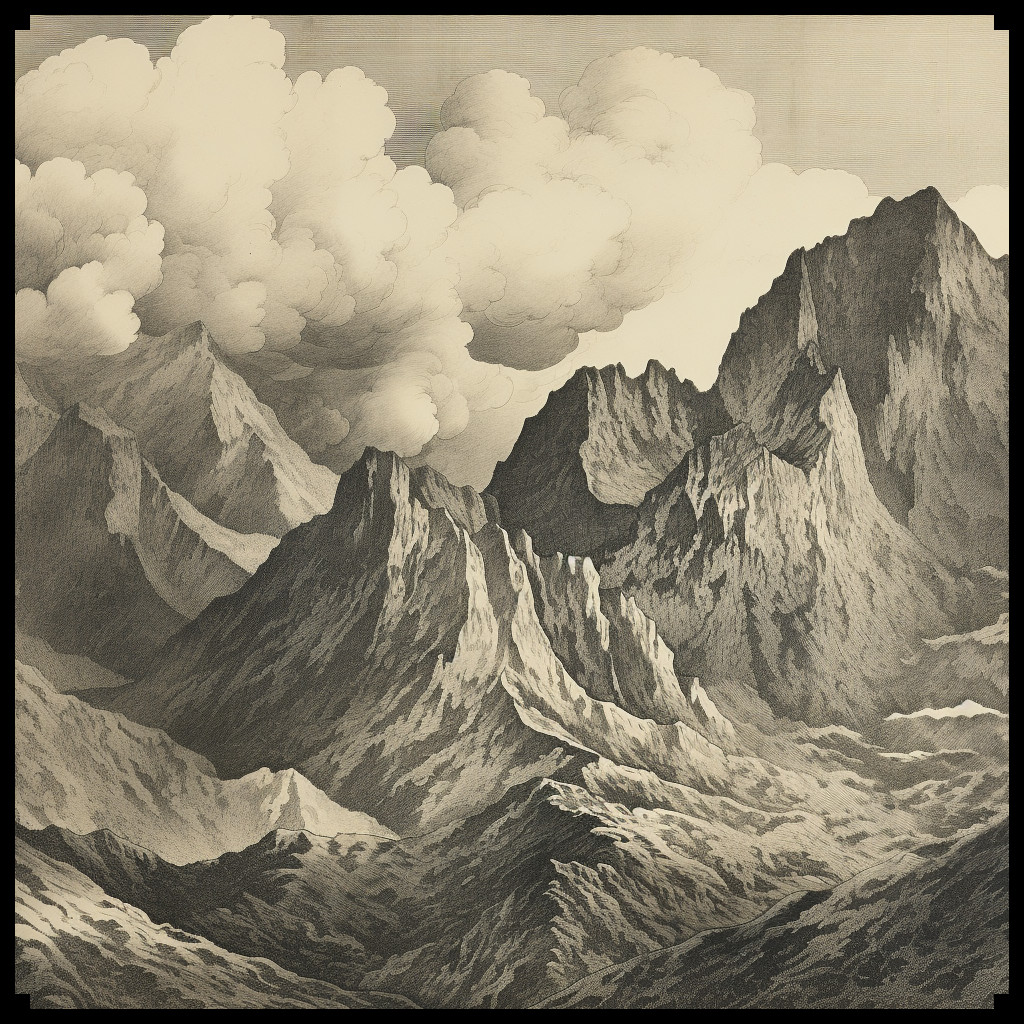
Fantasy worlds, especially those as rich as The Elder Scrolls, inspire awe and immersion, largely due to their intricate maps and unique cultural landmarks. Beyond navigation, these maps serve historical, cultural, and aesthetic purposes that deepen players’ connection to the lore and landscapes of Tamriel. The Elder Scrolls-inspired Settlements, Towns, Ruins, & Structures – Vintage Assets Megapack offers an exquisite collection of icons that add an exotic touch and profound depth to any fantasy map, bringing the diversity and complexity of Tamriel’s cultures and architectures to life. From Altmer towers to Orsimer strongholds, these assets provide worldbuilders and cartographers with a set of tools to create maps that feel both historically grounded and visually captivating.
BUY AND DOWNLOAD The Elder Scrolls inspired Settlements, Towns, Ruins, & Structures – Vintage assets Megapack here :
1. Altmer Cities and Towers: Elegance and Legacy
The Altmer, or High Elves, of Summerset Isle are renowned for their sophisticated architectural style, with cities and towers that embody their wisdom, artistry, and pursuit of perfection. Iconic structures like the Crystal Towers and Adamantine Towers represent the Altmer’s reverence for elegance and magical mastery. In this vintage asset pack, Altmer cities are portrayed with intricate spires and graceful designs, mimicking the towering beauty of their real-world counterparts. These soaring structures emphasize the Altmer’s aspirations and their deep connection to celestial forces. Maps featuring Altmer cities are more than simple navigation tools; they serve as visual reminders of the Altmer’s lasting influence and refined aesthetics. These towers don’t just mark locations—they symbolize enlightenment and grandeur, reaching toward Aetherius as if striving for divine perfection.
2. Bosmer Tree Villages: Harmony with Nature
In Valenwood, the Bosmer (Wood Elves) build their homes within the Graht-Oak Trees, enormous living structures that can house entire communities. Unlike traditional wooden buildings, Bosmer settlements are fully integrated into these massive trees, reflecting their Green Pact with Y’ffre, which forbids them from harming plant life unnecessarily. The assets representing Bosmer tree towns capture the organic, interconnected nature of these homes nestled among roots and branches, illustrating the Bosmer’s profound harmony with their environment. Maps that display Bosmer villages highlight the balance between nature and community, marking areas of spiritual and cultural significance where the Bosmer live in unity with the forest. These tree towns serve not only as symbols of shelter but as visual representations of the Bosmer’s naturalist lifestyle, emphasizing their inseparable bond with the lush landscape of Valenwood.
3. Argonian Temples and Pyramids: Mysterious and Resilient
Argonian architecture, often inspired by Aztec or Mesoamerican styles, radiates mystery and resilience. The stone villages and pyramid-like temples depicted in the assets convey a sense of durability and deep connection to the ancient roots of Black Marsh. These Argonian pyramids symbolize the enigmatic spiritual practices of their culture and their strong ties to the Hist, the ancient trees that hold ancestral wisdom. When these structures appear on maps, they not only mark Argonian territories but also represent the enduring spirit of a people who have thrived in Tamriel’s most challenging landscapes. Their structures reflect a steadfast strength, blending with the rugged environment to stand as proud testaments to Argonian survival and independence.
4. Dunmer Settlements and Curved Architecture of Morrowind
The Dunmer (Dark Elves) of Morrowind are known for their unique, curved architectural style that sets them apart from other cultures in Tamriel. Unlike the rigid and angular structures seen elsewhere, Dunmer architecture flows in organic, circular shapes, as seen in their temples, spiraling walkways, and rounded domes. This curved design is deeply rooted in the mystical and volcanic landscape of Morrowind, reflecting the Dunmer’s adaptability to their harsh environment. The assets in this pack capture the elegant and fluid lines of Dunmer structures, with sweeping spirals and softly rounded edges that give their buildings a harmonious, almost ritualistic feel. The Red Mountain, a central landmark often illustrated with fiery eruptions on maps, serves as a potent symbol of the challenges the Dunmer face. Maps featuring these curved structures not only highlight the geography of Morrowind but also express the deeply spiritual and resilient nature of the Dunmer people, whose culture is shaped by both fire and faith.
5. Dwemer Ruins: A Legacy of Lost Knowledge
One of Tamriel’s most mysterious landscapes is dotted with Dwemer ruins, remnants of an ancient, vanished civilization known for its advanced technology and intricate metalwork. These ruins, scattered across Skyrim, Morrowind, and beyond, are depicted as complex, industrial structures that stand in stark contrast to the natural world around them. On maps, Dwemer ruins serve as reminders of a forgotten era, evoking intrigue and speculation about the knowledge and achievements of this enigmatic race. The assets representing Dwemer ruins capture this distinctive design with intricate gears, metallic frameworks, and towering edifices that stand as silent monuments to lost wisdom. Cartographers place these ruins as cultural landmarks, transforming them into prime locations for adventurers and scholars alike to seek the secrets hidden within.
6. Khajiiti Cities and Temples: A Fusion of Cultures
The Khajiit of Elsweyr, with their oriental and Middle Eastern-inspired architecture, bring a unique and exotic flair to Tamriel’s map. Their cities and temples are characterized by domed roofs, pointed arches, and intricate carvings, reflecting their desert homeland and cultural diversity. These structures are symbols of the Khajiit’s adaptability and rich history of trade with other Tamrielic cultures. When represented on maps, Khajiiti cities are visualized as vibrant and exotic hubs, often surrounded by sand dunes or lush greenery. Their architecture provides protection against the harsh desert climate while embodying their spirituality and lively culture. Maps featuring Khajiiti towns and temples immerse players in the multicultural allure of Elsweyr, where the desert’s mysteries blend seamlessly with the ingenuity and artistry of the Khajiit.
7. Orsimer Fortresses and Strongholds: Resilience and Strength
The Orsimer, or Orcs, of Orsinium are famed for their imposing fortresses and rugged structures, which embody their values of resilience and might. Built atop mountains or within heavily fortified compounds, these Orsimer strongholds often feature both solid stone walls and, at times, reinforced wooden walls, designed to withstand both natural elements and hostile forces. The assets in this pack showcase Orsimer architecture with robust wooden or stone defenses, pointed stakes, and spiked towers that capture the Orcs’ warrior spirit and enduring fortitude. When depicted on maps, these strongholds signify the unyielding will of the Orsimer people and their determination to carve out a place in Tamriel despite centuries of struggle. These fortresses are more than strategic outposts; they are powerful cultural symbols, marking Orsimer territory with an unmistakable presence that underscores their fierce independence and pride.
8. Mountain Fortresses and Citadels: Commanding the Peaks
Across Tamriel, mountainous regions host fortresses and citadels that stand high above the surrounding landscapes. These strongholds, including those of the Orsimer, are strategically placed for defense, fortified with stone walls. The assets in the vintage pack illustrate these mountain strongholds with layered settlements and towering structures that embody the strength of a civilization that has endured countless invasions. Mountain fortresses on maps serve as symbols of authority, marking the dominance and resilience of those who inhabit them, from the Orsimer of Orsinium to the isolated tribes who have carved out lives in these lofty realms.
9. The Iconic Towers of Tamriel: White-Gold, Crystal, and Adamantine
No map of Tamriel is complete without the inclusion of its legendary towers: the White-Gold Tower in Cyrodiil, the Crystal Tower in Summerset, and the Adamantine Tower in High Rock. These towers are ancient, mystical landmarks woven deeply into Tamriel’s history, representing the pinnacles of magical and architectural achievement. Each tower holds profound historical and mythological significance, serving as centers of power, governance, and arcane knowledge. The White-Gold Tower, for instance, is both a literal and symbolic heart of the Empire, while the Crystal Tower shines as a beacon of Altmer magic. Maps featuring these towers are not just geographical markers—they are icons of Tamriel’s legacy, standing as emblems of realms of power, mystery, and majesty known across Nirn.
10. The Decorative and Utilitarian Aspects of Antique Map Design
Beyond their lore and geographic details, the vintage design of these map assets serves dual roles: practical navigation and decoration. Antique maps often feature intricate frames and borders, as seen in this asset pack, which not only embellish the map but also provide visual boundaries that draw the viewer’s focus to the contents within. Each icon and structure is crafted with an eye toward historical styles, creating a sense of immersion in a hand-drawn, antique cartographic aesthetic. These maps do more than guide—they tell stories, preserving cultural lore and geographical significance that enrich the player’s understanding of Tamriel.
Conclusion
The Elder Scrolls-inspired Settlements, Towns, Ruins, & Structures – Vintage Assets Megapack offers more than just a collection of icons; it’s a tribute to the complex histories, cultures, and mysteries of Tamriel. Each asset, from Altmer towers to Bosmer tree cities, captures the essence of the race it represents, adding an exotic flair and a profound depth to any fantasy map. By integrating these assets, cartographers and fans of The Elder Scrolls can create maps that are not only visually captivating but also culturally resonant, echoing the age-old stories and mystical landscapes that make Tamriel an unforgettable world.



